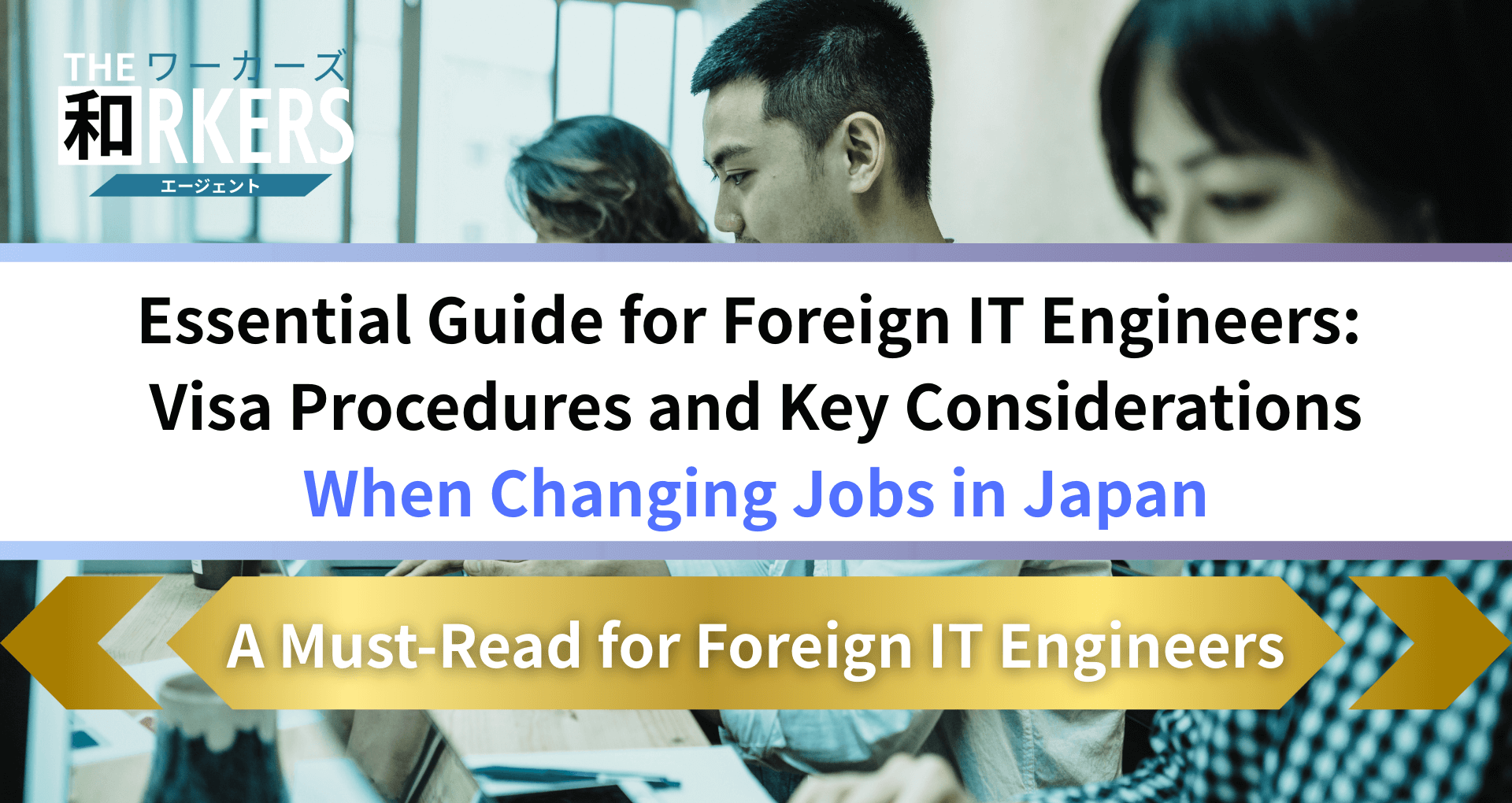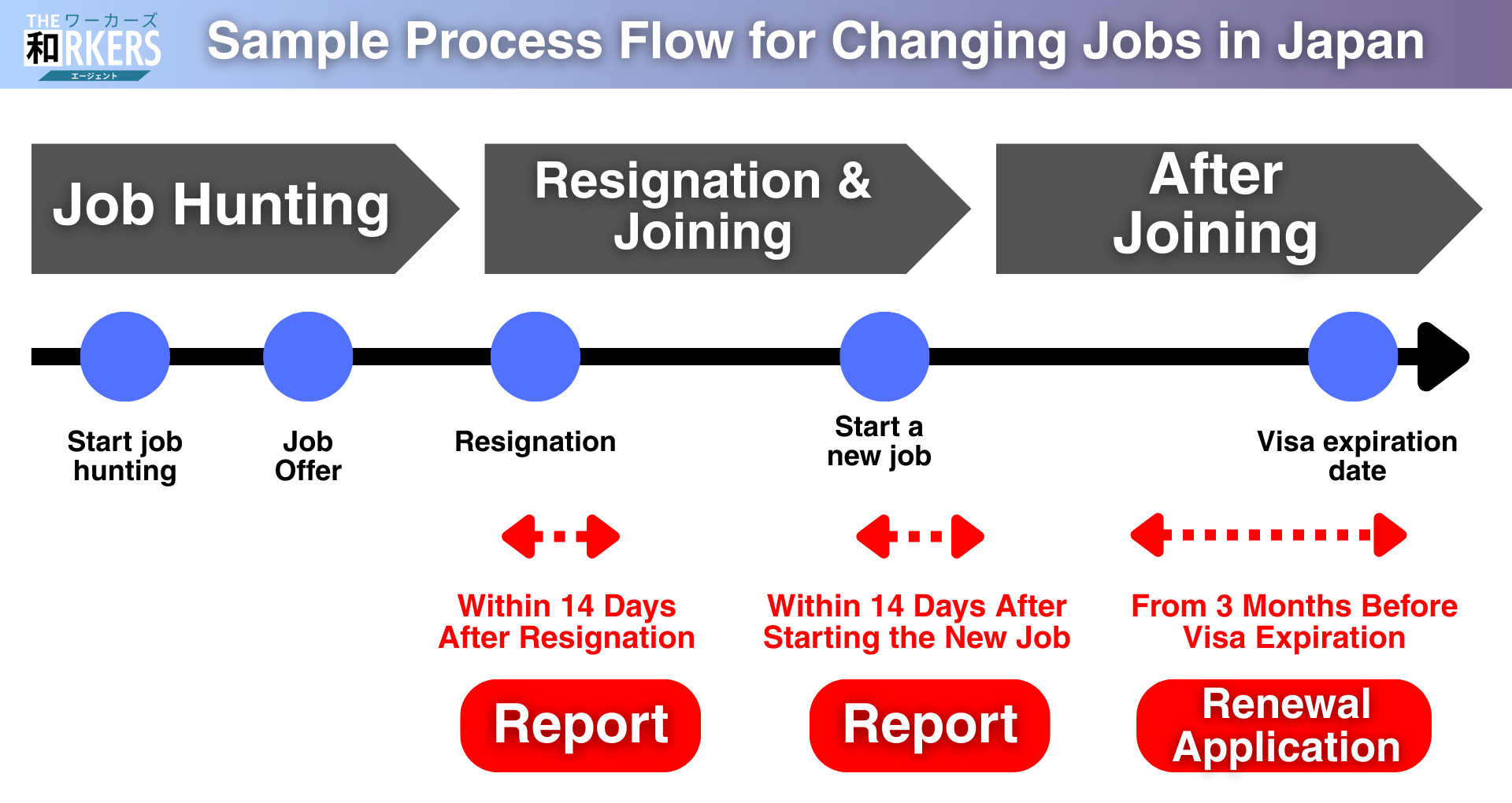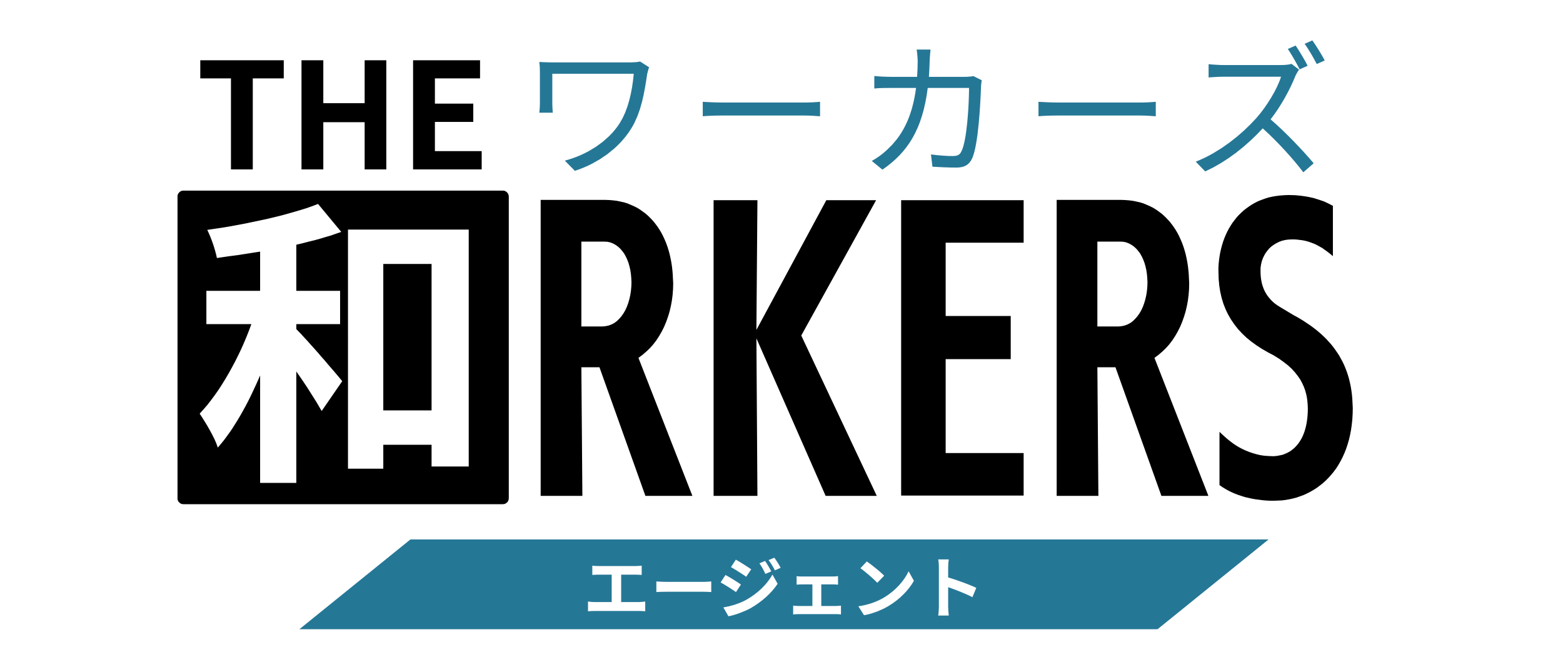Essential Guide for Foreign IT Engineers: Visa Procedures and Key Considerations When Changing Jobs in Japan

For foreign nationals working in Japan as IT engineers or IT consultants, changing jobs can be a great opportunity for career advancement. At the same time, many hesitate to take the next step due to concerns about their visa status.
This is especially true for those working under the “Engineer/Specialist in Humanities/International Services” visa. Understanding the necessary procedures and important points to consider when changing jobs is essential.
In this article, we provide a comprehensive, beginner-friendly guide for foreign IT professionals already working in Japan. We’ll cover everything from visa basics to notifications required when changing jobs, how to update your visa, and common misunderstandings and pitfalls—clearly and thoroughly.
We’ve kept the language casual and easy to understand, avoiding complicated legal jargon. So even if this is your first job change in Japan and you’re feeling unsure, we encourage you to read through to the end.
Disclaimer:
While we have taken great care to ensure the accuracy of the information in this article, immigration procedures and requirements are subject to change.
For the most up-to-date and official guidance, please refer to the Immigration Services Agency of Japan’s website:出入国在留管理庁
1. What Is the “Engineer/Specialist in Humanities/International Services” Visa?
Let’s start by reviewing the basics of the visa status you may currently hold: the “Engineer/Specialist in Humanities/International Services” visa. This is a work visa granted to foreign nationals engaged in professional fields such as technology (e.g., science and engineering), humanities (e.g., law and economics), or international services (e.g., language-related roles or overseas business operations).
In most cases, applicants must have at least a university degree or equivalent work experience. This visa covers a wide range of professions including IT engineers, IT consultants, planners, sales roles, interpreters, and translators.
With this visa, you are permitted to work for a Japanese company in a role that makes use of your specialized skills and knowledge. On the other hand, jobs considered to be unskilled labor—such as factory work or waiting tables in restaurants—are not allowed. So it’s important to clearly understand the scope of work permitted under your current visa.
Here are some examples of eligible roles:
| Engineer (技術) | Mechanical, electrical, and electronic engineers System engineers, application/web developers, programmers Network and cybersecurity specialists AI engineers and data scientists CAD designers |
|---|---|
| Humanities (人文知識) | Corporate planners, sales professionals, and marketers Accounting and finance staff HR and labor management personnel Legal, general affairs, and PR/IR specialists Consultants and product planning/development staff |
| International Services (国際業務) | Interpreters and translators Trade administrators and international sales professionals Language school instructors Hotel staff primarily serving foreign tourists (e.g., interpreters and guides) |
2. Visa Procedures You Need to Know When Changing Jobs in Japan
If you’re planning to change jobs while living in Japan, there are a few visa-related procedures you should be aware of. The good news is that if you hold an “Engineer/Specialist in Humanities/International Services” visa, you are allowed to change jobs and continue working at a new company as long as it falls within your current visa category and is within your permitted period of stay.
However, even if your visa type remains the same, you’re required to notify the Immigration Services Agency after changing jobs. In some cases, you may also need to apply for a visa update or renewal. Below are the key procedures you need to follow:
2-1. Notify Immigration of Your “Affiliated Organization” Within 14 Days
The most important thing to do after changing jobs is to file a Notification of Affiliated Organization with the Immigration Bureau. If you’re changing jobs while keeping the same visa type, you’re legally required to report both your resignation and new employment under Article 19-16-2 of the Immigration Control and Refugee Recognition Act.
You must notify the Immigration Bureau within 14 days of leaving your previous job and again within 14 days of starting your new job.
This is a notification only, not a formal visa application or review—but failing to submit it could result in a fine of up to 200,000 yen and may negatively affect future visa renewals or permanent residency applications.
| Where to submit: | You can submit the notification at the nearest immigration office, by mail, or online via the Immigration Services Agency’s online system. Online submission is convenient, though it requires pre-registration. |
|---|---|
| What to report: | Name and address of your former employer, and the date you left Name and address of your new employer, and the date you joined Your new job title and a brief description of your duties All of this is entered on a designated Immigration Bureau form. If you haven’t yet secured a new job after resigning, just submit the notification about your resignation first. Then, once you start your new job, submit the employment notification within 14 days. |
| Why this notification matters: | The Immigration Bureau must always be aware of what type of work foreign nationals are doing and where they are working. Delaying or skipping this step can cause complications during your next visa renewal or when applying for permanent residency. Always report job changes promptly. |

2-2. Does Your New Job Fall Within the Scope of Your Visa?
Next, you need to make sure that your new job duties are still covered by your current visa category.
The “Engineer/Specialist in Humanities/International Services” visa is intended for jobs that require specialized knowledge or skills. Therefore, even after switching jobs, your new position must fall within the same scope. For example, moving from one IT engineering role to another, or switching to a sales position at a different company, generally poses no issue.
However, if your new job involves a significant change in duties that fall outside the scope of this visa, you’ll need to be careful. Positions that involve unskilled labor, or professions that require national licenses (such as doctors or lawyers), are not allowed under your current visa.
If your new job does not align with the “Engineer/Specialist in Humanities/International Services” category, you’ll need to apply for a Change of Status of Residence before starting the new role. This involves preparing documentation and undergoing screening based on the new visa category. Failing to do so could result in a visa mismatch, which may be considered unauthorized employment.
In most cases, foreign IT professionals switching jobs will remain within the same visa category. Still, it’s crucial to review your new job duties in detail before changing jobs—and consult an expert if you’re unsure.
Tip: Use the “Certificate of Authorized Employment” for Peace of Mind
If you’re unsure whether your new job fits your current visa status, you can apply for a Certificate of Authorized Employment from the Immigration Services Agency. This document serves as official confirmation that your job duties at the new company are covered by your existing visa.
Applying for this certificate is optional—not mandatory—but it can be especially helpful if your new role is borderline in terms of visa eligibility, or if this is your first time changing jobs in Japan and you feel uncertain.
Having this certificate on hand can also help ensure a smoother process when renewing your visa in the future.
Learn more and apply here:
Certificate of Authorized Employment (Immigration Services Agency)
In some cases, it may be unclear whether a certain job qualifies under a specific visa type. That’s why the Immigration Services Act allows foreign nationals to request a Certificate of Authorized Employment. This certificate is intended to help both employers and foreign workers clearly understand the type of work permitted under a given visa.
Note: Whether or not a foreign national is allowed to work in Japan depends on their visa type and whether they hold a Permission to Engage in Activity Other Than That Permitted. The certificate itself is not a work permit, nor is it required in order to work.
Also, according to Article 19-2, paragraph 2 of the Immigration Control and Refugee Recognition Act, employers must not treat a foreign applicant unfavorably (e.g., discrimination) simply because they do not have this certificate.
2-3. Check Your Visa Expiration Date and Know When to Renew
Don’t forget to check the expiration date printed on your current Residence Card. Each visa comes with a fixed period of stay—commonly “3 months,” “1 year,” “3 years,” or “5 years.” If you don’t apply for a renewal before your visa expires, you won’t be able to legally remain in Japan.
You can apply to renew your visa (called the Application for Extension of Period of Stay) starting three months before the expiration date. If your visa is close to expiring around the same time you’re changing jobs, special attention is needed.
For example, if you change jobs with only two months remaining on your visa, you’ll need to quickly gather the required documents from your new employer and apply for an extension. On the other hand, if you have plenty of time left on your current visa (e.g., more than six months), there’s generally no need to rush into a renewal right after switching jobs.
Make sure you know what documents are required for a visa extension. Here are the main items typically needed:
- Application form for Extension of Period of Stay (designated Immigration Bureau format)
- Residence Card and passport (for presentation)
- Employment contract or job offer letter from your new company (showing current work conditions)
- Company information documents (e.g., certificate of registered matters, company brochure) and a description of job duties
- Proof of salary (e.g., payslips or employment contract showing compensation equal to or higher than that of a Japanese national)
- Letter of guarantee from your employer and a statement of reasons (if required)
Note: In your first visa renewal after changing jobs, you may be asked to submit a written explanation if your duties have changed significantly, or if there was a long period of unemployment. If you’ve had a long gap between jobs or a drastic change in profession, be prepared to provide detailed documentation to help the immigration officer understand your situation.
You can submit your application to the Immigration Services Bureau with jurisdiction over your residence area. Applications can be made by the applicant themselves, a representative of the company, or an authorized immigration lawyer (gyoseishoshi).
Since the review process can take several weeks to over a month, don’t wait until the last minute—prepare and apply as early as possible.
3. Common Misunderstandings and Important Reminders When Changing Jobs
When changing jobs for the first time in Japan, it’s common to feel unsure about visa-related procedures—and that uncertainty can lead to misunderstandings. Here, we’ve summarized some of the most frequently asked questions and points of confusion in a simple Q&A format.
Understanding the facts will help you navigate your job change with greater confidence and less stress.
- Does my visa become invalid once I change jobs?
-
No, it doesn’t. Your visa (status of residence) is issued to you as an individual, not tied to a specific employer. As long as your visa is valid and your new job falls within the permitted activities, you can continue working.
However, you must report your job change to Immigration within 14 days and ensure your new duties fall within your visa scope—otherwise, you could face issues. - Am I not allowed to leave my job before securing a new one?
-
Not necessarily. You’re allowed to leave your current job first and look for a new one afterward. Your visa remains valid as long as it’s within the period of stay.
However, if you remain unemployed for over three months without a valid reason, your visa may be subject to cancellation.
If you leave your job without a new one lined up, be sure to submit the notification of resignation within 14 days, and then submit the employment notification once you start a new job.
Also, a long gap between jobs might prompt stricter checks during renewal—e.g., Immigration may ask how you supported yourself or whether you worked illegally.
Whenever possible, try to find a new job quickly or keep documentation proving you’re actively job hunting (e.g., proof of registration with Hello Work). - Do I need to get a Certificate of Authorized Employment when changing jobs?
-
No, it’s not mandatory. As mentioned earlier, as long as your new job falls within your current visa category, you can continue working without this certificate.
That said, if you’re unsure whether your new role is allowed under your current visa, applying for the certificate is recommended. Some companies may also request it for HR or legal reasons. In those cases, it’s best to comply and apply early. - Will working at a small company make it harder to renew my visa?
-
Not automatically, but the review process may be stricter.
Compared to large or publicly listed companies (often classified as “Category 1” by Immigration), newer or smaller companies (Categories 3 and 4) may be required to submit more documentation when you apply to renew your visa.
This might include financial statements, business plans, and a personal statement explaining your reason for changing jobs.
This is to help Immigration confirm that the company is stable and that your working environment is secure. Coordinate with your new employer in advance to prepare all necessary documents. - Do I need special permission if I want to work a side job (have two jobs)?
-
If both your main and side jobs fall within the scope of your current visa (e.g., both are IT engineering roles), you don’t need a separate work permit.
However, you still need to report both employment contracts to Immigration.
If your side job is outside the permitted scope—like working at a convenience store at night—you must apply for a Permission to Engage in Activity Other Than That Permitted.
Without this, such work would be considered unauthorized employment and could lead to visa problems.
4. Timeline and Procedures for Changing Jobs in Japan
Finally, let’s take a look at the general schedule for handling visa-related procedures when changing jobs in Japan. Below is a step-by-step overview of what to do before, during, and after the job change.
Check the expiration date on your Residence Card and consider how it aligns with your planned job change.
If your visa is set to expire soon, start preparing for renewal as soon as you receive a job offer. Request necessary documents from your new employer—such as an employment contract and company profile—and consider applying for a Certificate of Authorized Employment (which may take 1–3 months to process).
Once you’ve resigned—whether before or after leaving your company—you must notify the Immigration Bureau within 14 days.
Even if you’ve already secured a new job, submit your resignation notification separately first. You can do this by mail. Once you receive official documents like a certificate of resignation, be sure to file the notification promptly.
Within 14 days of starting your new job, submit a notification of your new employment to the Immigration Bureau.
This complements your earlier resignation report and includes details like your new company’s name, address, and the date you started working. Make sure to enter the information accurately.
If your visa is close to expiring, you’ll need to apply for a renewal soon after starting your new job.
The immigration office will evaluate whether your new job meets the conditions of your visa. Submit all required documents without omissions.
If this is your first renewal since changing jobs, consider including a statement of explanation describing your career transition and current role. Since processing can take time, be sure to apply well in advance of your visa’s expiration.
Once your visa renewal is approved, you’ll receive a new Residence Card, allowing you to work with peace of mind.
Continue to manage your visa deadlines carefully, and keep important documents (like tax certificates) in preparation for future renewals.
If you’re aiming to apply for permanent residency or change to another visa category (e.g., Highly Skilled Professional), this job change could become a valuable part of your long-term career plan.
Changing jobs while managing visa procedures may seem overwhelming, but if you handle each step properly and on time, it’s completely manageable.
Don’t hesitate to consult your HR team or a certified immigration lawyer (gyoseishoshi) if you’re unsure. Planning ahead is key.
5. Conclusion: Take the Right Steps and Move Forward with Confidence
To wrap up, here are the key points to remember for foreign IT professionals holding the “Engineer/Specialist in Humanities/International Services” visa:
- Submit notifications to Immigration within 14 days of resigning or starting a new job
- Ensure your new job duties fall within the scope of your current visa
- Keep track of your visa expiration date and renew it in time
While the process may involve some paperwork—such as preparing explanation letters or collecting documents from your employer—as long as you follow the required steps, you can change jobs without worry.
In fact, many foreign engineers have successfully changed jobs and advanced their careers in Japan under this visa.
A job change can be a bold and exciting step forward. By handling your visa procedures correctly, you can start your new chapter with confidence. If anything is unclear, seek guidance from professionals or colleagues who’ve been through the process.
Use this article as a reference to prepare effectively, and take one step closer to building a more fulfilling career in Japan.




